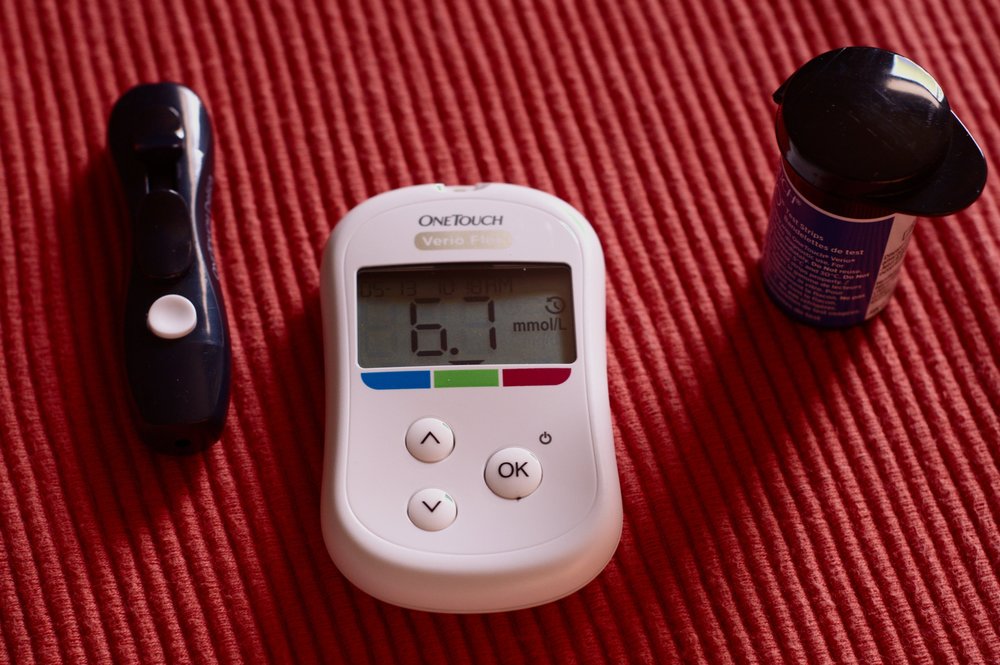Benefits of Diet & Exercise for Diabetes
Can Diet and Exercise Help Manage Diabetes?
The answer is a resounding “yes!” Diet and exercise are important for everyone, but they are especially crucial for people with diabetes. This article will discuss the benefits of diet and exercise for people with type 1 and type 2 diabetes. So stay healthy and happy by following these simple tips!

What is Diabetes?
First of all, what is diabetes? Simply put, diabetes is a chronic condition that affects the way your body metabolises sugar. There are two main types of diabetes: type 1 and type 2.
Type 1 Diabetes
Type 1 diabetes occurs when the pancreas produces little or no insulin. People with type 1 diabetes must take insulin injections to control their blood sugar levels.
Type 2 Diabetes
Type 2 diabetes, which is more common, happens when the body becomes resistant to insulin or doesn’t make enough of it. People with type 2 diabetes can often control their blood sugar levels with diet and exercise, but diabetes medication is also often needed.
Symptoms of Diabetes
The symptoms of diabetes can be subtle and may not be apparent at first. The most common symptoms are:
- Increased thirst
- Frequent urination
- Fatigue
- Blurred vision
- Losing weight without trying
- Increased appetite
- Numbness or tingling on hands or feet
- Have very dry skin
If you experience any of these symptoms, it is crucial to seek advice from your doctor immediately as they could indicate diabetes.
The Benefits of a Healthy Diet for Diabetes
A healthy diet for people with diabetes is generally the same as a healthy diet for everyone else: plenty of fruits, vegetables, whole grains, lean protein, and moderate amounts of healthy fats. However, studies show that people with diabetes may need to pay special attention to the number of carbohydrates they eat.Managing Carbohydrates Intake
Carbs are the body’s primary source of sugar, and they’re found in bread, pasta, rice, fruits, and starchy vegetables. When you eat carbohydrates, your body breaks them down into sugar and releases them into your bloodstream and your body uses this sugar in the bloodstream for energy. Carbohydrates increase blood sugar levels, and insulin is released when your body detects high blood sugar levels. A diabetic person cannot produce enough insulin to bring this blood sugar down to an acceptable level. This is when intervention through medications is needed. As eating carbohydrates increase your blood glucose level, a diabetic person needs to measure the number of carbohydrates and match it to the appropriate amount of insulin for the individual. Spreading out carbohydrates you consume throughout the day is a great way of managing your blood glucose levels. Too many carbohydrates can cause your blood sugar levels to spike but too little can cause your levels to drop. Regularly eating small meals is a great way to maintain your blood sugar levels.
Low Fat Diet
A low-fat diet is very beneficial to a diabetic person. As well as carbohydrates, which provide the body with energy, high levels of fats, particularly saturated fat, can cause higher blood sugar levels and increase insulin resistance. A low saturated fat diet also helps to reduce the risk of heart disease which is one of the main complications of diabetes.
Some easy changes to make in your diet to help lower your fat intake are: switch to low-fat milk, swap butter for margarine and use lean cuts of meat.
Making these small changes will help ensure that you’re getting the nutrients you need while keeping your blood sugar levels under control.
Lower Triglyceride Levels
Triglycerides are fats found in the blood, produced from dietary sources such as animal fats or plant fats such as nuts and seeds.
Diabetics typically have a higher level of triglycerides, which can increase their risk of heart disease and stroke. Healthy eating can help lower your triglyceride levels. For example, limiting the amount of alcohol you drink, consuming low GI foods and increasing your omega-3 intake (found in fish and some nuts and seeds) can significantly decrease your triglyceride levels.

Eating Low GI Foods vs. High GI Foods
GI, or Glycemic Index, refers to the rate at which your body breaks food down into energy. Low GI foods are foods that are more slowly converted into energy by the body compared with high GI foods, which are converted much faster. It is often recommended that diabetic people eat foods with a low GI, as the longer it takes for food to break down can help keep a stable blood sugar level. In comparison, foods with a higher GI can negatively affect blood sugar levels.What is a Good Diabetic Diet?
A diet for a diabetic person includes foods high in fibre, lean protein, healthy fats, and complex carbohydrates. This diet helps to regulate blood sugar levels and provides the nutrients needed for a healthy lifestyle. Limiting processed or fried foods, sugary drinks, and alcohol is also important. A dietitian can help you create a healthy diabetes meal plan that fits your individual needs.
As you can see, there are many benefits to following a healthy diet! If you have diabetes, talk to your dietitian or doctor about the best diet. A healthy diet can help improve your blood sugar levels, lose weight if needed, and reduce your risk of heart disease and other health problems. By eating healthy foods, you’ll feel better both physically and emotionally. And remember to stay active and exercise regularly to keep your diabetes under control.
THE BENEFITS OF EXERCISE
Physical activity is important for everyone, not just those with diabetes. Exercise has many health benefits, such as reducing the risk of heart disease, improving mental health, and helping to maintain a healthy weight. For people with diabetes, being physically active is especially important. It can help to control blood sugar levels, improve insulin sensitivity, and help manage weight.
Physical activity doesn’t need to be intense to be beneficial. Any type of activity is better than none at all. Taking a brisk walk every day, riding a bike, doing some gardening, or swimming are all great exercises that can be easily incorporated into any lifestyle. If you’re not sure where to start, consult with your doctor or a fitness professional to create a plan that’s right for you.
IMPROVES CIRCULATION
Exercise and physical activities can help reduce nerve damage caused by poor circulation. You may not already be aware that high blood glucose levels can damage your nerves, causing them to stop sending signals to your brain. Nerve damage is widespread in diabetic people, and being physically active can help reduce the effects.
Running, walking, and swimming are all great examples of movements that can help reduce poor circulation. However, people experiencing nerve damage may find higher-impact activities challenging to do. Simple exercises, such as a slow walk or moving around in a swimming pool, are a great way to start moving and improve your circulation.

What are Good Exercises for a Person with Diabetes?
All forms of regular physical activity are beneficial to diabetic people. Aerobic exercise, such as cycling, swimming or walking briskly, can improve your well-being. It is recommended to get at least 30 minutes a day of moderate-intensity physical activity. This can help to lower your blood glucose levels significantly.
Due to poor blood circulation, some people may find difficulties being physically active at first, so exercises such as swimming and slow walks are a great way to be active safely and then build up to moderate exercise as they begin to feel more freedom of movement. However, it’s important to remember to start slowly.
Exercise and a healthy diet are essential for everyone, but they’re especially crucial for people with diabetes. Eating the right foods and regularly exercising can lower your blood sugar levels, improve your cholesterol levels, and reduce your risk of heart disease. If you want to learn more about creating a healthy lifestyle for yourself or someone you care about, check out our other blog posts on diabetes prevention and management or get in touch with one of our Accredited Practicing Dietitians.
With no waiting lists or travel charges, we can see people in Sydney, Wollongong and the Sunshine Coast in a timely manner that ensures the best use of your NDIS funding.
To find out more about how we might be able to help you, contact our friendly team on (02) 8355 1747,
hello@activeability.com.au or via our contact form.